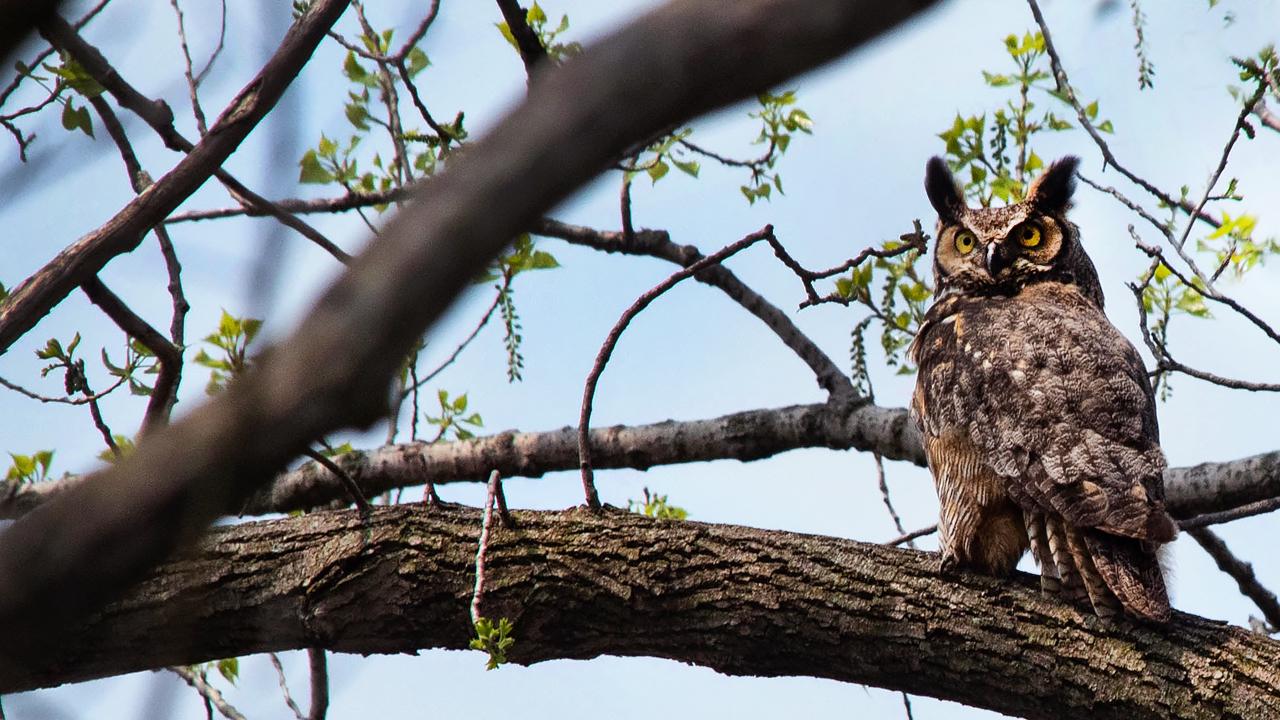

Wildlife
Garden Stories
Wildlife Tales in the Snow
Winter is a great time to celebrate the beauty of the natural world and wildlife around you.
After a big snow, I encourage you to take a walk around your neighborhood—or at the Chicago Botanic Garden and other green space—to look for animal tracks, either with your children or for your own benefit. Fresh air, exercise, and exposure to nature deliver many benefits for your health and well-being. As an additional benefit for little ones, searching for animal tracks and talking about what you find can be a fun way to stimulate meaningful conversation.
This winter, I walked around my Chicago neighborhood after two snowfalls and took pictures of the tracks I found. Here’s a list of four animal tracks you are likely to find in your urban neighborhood, even if you aren’t familiar with tracks and have never studied them before.
4 Animal Tracks You Can Find in Urban Areas
Bird
Most birds have three toes pointing forward and one toe pointing backward. You probably won’t be able to identify the kind of bird unless you see it hopping through the snow, so don’t be too concerned about specifics. Look for bird tracks near bird feeders or grass plants, where birds are feeding on the seeds.
Squirrel
Squirrel tracks have little toes that you will see in their fresh footprints. Squirrels build nests, called “dreys,” in trees, so you’ll often find their tracks at the base of a tree; sometimes, there will also be tracks from a dog that chased the squirrel up a tree. The larger back paws of the squirrel may be ahead of the front paw if the squirrel was running fast. It’s highly likely you will also find their tracks around bird feeders.
Rabbit
A rabbit’s back feet are longer than its front paws, so its tracks will have an obvious size difference. Like squirrels, rabbits bring their back legs in front of their front legs and leap forward, so their longer back footprints often appear ahead of the front feet in their tracks. Rabbits come out of hiding from bushes or other sheltered locations, so you will have most success finding their tracks near places where they can hide. They may hop out into a yard, but they they will probably retreat back to safety when they see a dog.
Mouse or Rat
The telltale sign of a mouse or rat track is the line made when the animal drags its tail through the snow. Like other rodents, the larger hind feet may appear to be in front of the front feet because of the way they bring their hind legs forward and leap when they are moving fast. If you live in the city, you probably have mice and rats in the alley, so look around the garbage bins where they are feeding.
Tips for Track Hunting
- Look for tracks a few hours after a fresh snowfall. The snow will be a smooth surface and the animals will have a chance to come out after the snow has stopped.
- Think about the animal’s habits and look for tracks in places where that animal finds food, water, or shelter.
- If you are unsure what animal made the track, look around for clues that might help you identify it. Are the tracks near a tree or bushes? Near a bird feeder? Take a picture and compare what you found to pictures of animal tracks online.
- For fun, try to figure out what the animal was doing, how it was moving, and where it was going. Read this blog for tips.
- Remember: Animals leave more than footprints as they move around your neighborhood; don’t eat yellow snow.

